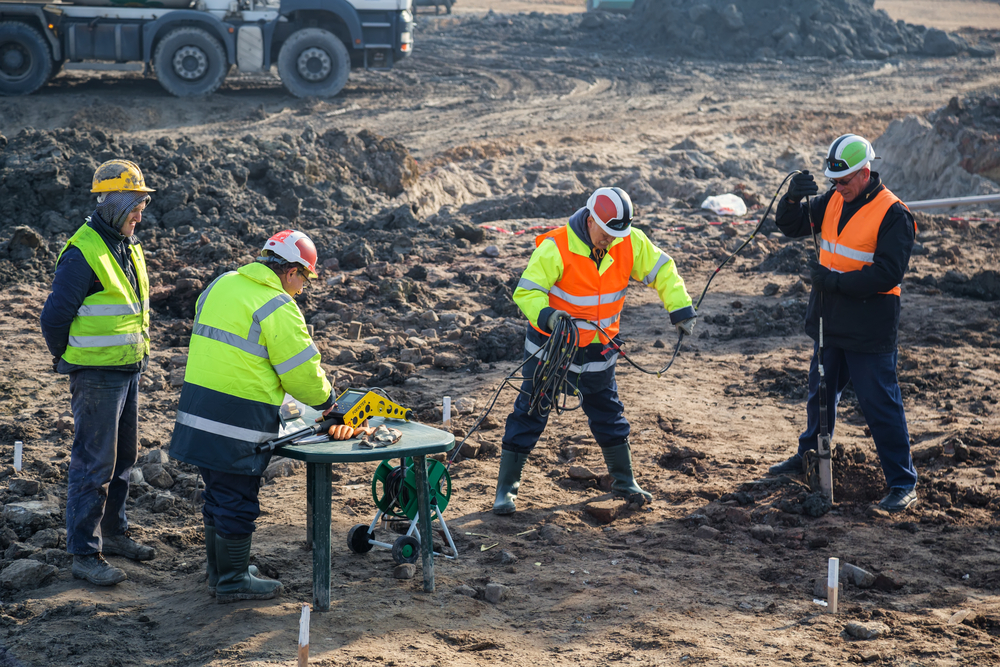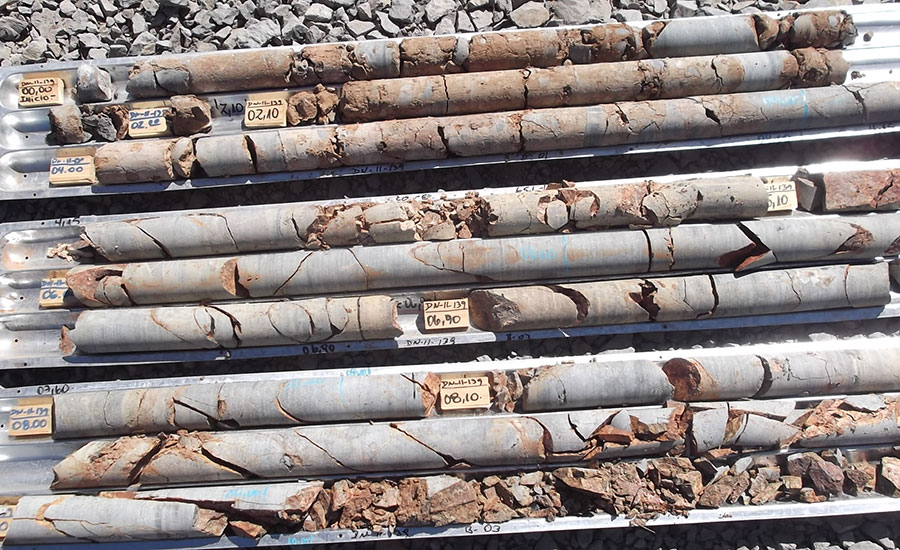A Detailed Review of Geotechnical Design Techniques and Their Influence On Modern Civil Design Projects
Geotechnical engineering offers as the backbone of modern civil engineering, offering crucial methods that attend to the intricacies of subsurface problems. The interplay of dirt evaluation, structure style, and cutting-edge modern technologies shapes the integrity and sustainability of facilities projects.
Significance of Geotechnical Design
Geotechnical engineering works as a critical foundation for civil design jobs, influencing the security and security of structures. This discipline focuses on the actions of soil and rock materials, supplying important insights that assist the style and building procedures. By recognizing the interaction between the earth and engineered frameworks, geotechnical engineers can evaluate dangers connected with ground conditions, such as negotiation, incline stability, and liquefaction.
The importance of geotechnical engineering prolongs past mere architectural honesty; it plays an important duty in environmental management and sustainability. Properly performed geotechnical evaluations ensure that jobs lessen their eco-friendly impact and adhere to governing requirements (about geotechnical engineering). Geotechnical design is crucial in site choice, making it possible for engineers to identify ideal areas for building that mitigate prospective risks.
On top of that, geotechnical engineering cultivates innovation in civil engineering by advancing techniques for ground enhancement, structure design, and excavation. The self-control's payments are important in dealing with obstacles presented by varying dirt problems, hence promoting reliable and risk-free facilities development. On the whole, the significance of geotechnical engineering is vital in guaranteeing that civil design projects are not only feasible however likewise durable versus man-made and natural misfortunes.
Secret Techniques in Geotechnical Design

An additional crucial method is soil stabilization, which entails changing dirt residential or commercial properties to improve load-bearing capability or minimize settlement. Techniques such as adding cement, lime, or using geosynthetics are frequently made use of to achieve soil improvement.
Ground enhancement techniques, consisting of vibrant compaction and vibro-replacement, are likewise crucial. These techniques aim to densify soft or loose soils, improving their stamina and decreasing liquefaction capacity in seismic locations.
Keeping structures, such as sheet piles and soil nailing, are employed to sustain excavations and protect against soil activity. Slope stabilization strategies, consisting of water drainage systems and maintaining walls, are necessary for reducing landslide dangers.

Dirt Evaluation and Testing Methods
Reliable dirt evaluation and testing approaches are important for recognizing the chemical and physical properties of dirt, which straight affect engineering decisions. A detailed analysis of soil features is essential for forecasting habits under various loading problems and environmental influences.
Usual soil screening methods include both field and lab methods. Area examinations, such as the Standard Penetration Examination (SPT) and Cone Penetration Test (CPT), give instant understandings right into dirt toughness, stratification, and thickness. These tests assist engineers assess website problems effectively prior to more comprehensive lab evaluations.
Research laboratory testing techniques, such as Atterberg restrictions, grain dimension circulation, and compaction tests, are crucial for figuring out soil plasticity, dampness content, and ideal compaction degrees. Advanced methods like triaxial examinations and consolidated undrained (CU) examinations provide beneficial information on shear toughness and efficient stress and anxiety parameters.
Chemical testing, including pH, electric conductivity, and organic web content evaluation, is additionally important for recognizing possible dirt contamination and its influence on construction products. Jointly, check these dirt evaluation and screening approaches develop the structure of educated decision-making in geotechnical design, ensuring the safety and stability of contemporary civil engineering projects.
Foundation Design Approaches
Structure style techniques are crucial in ensuring the stability and long life of frameworks. These strategies can be classified right into shallow and deep structures, each fit to specific dirt conditions and loading scenarios. Shallow structures, such as spread footings and mat structures, are commonly made use of when surface area dirts have adequate bearing capacity. They distribute the tons over a larger location, reducing settlement dangers.
On the other hand, deep structures, consisting of heaps and drilled shafts, are employed when surface dirts are insufficient or weak for sustaining the framework. These foundations transfer lots to much deeper, much more steady soil or rock layers, making them crucial for high-rise structures and bridges in tough geotechnical problems.
Choosing the proper structure style involves complete geotechnical examinations, including soil make-up, birthing ability, and groundwater conditions. Furthermore, designers need to consider aspects such as negotiation, lateral lots, and prospective seismic activity to ensure the structure's efficiency in time.
Inevitably, a well-executed foundation design is a pivotal element of civil design, straight affecting the security, sturdiness, and functionality of structures. geotechnical companies in south africa. By lining up foundation kinds with site-specific problems, engineers can effectively alleviate threats connected with structure failing
Advancements Forming Civil Design

Lasting products, such as high-performance concrete and recycled aggregates, are additionally gaining grip, advertising eco-friendly methods while preserving architectural integrity. Additionally, progressed geotechnical strategies, such as ground renovation and deep mixing techniques, are boosting the security of foundations in difficult dirt problems.
Furthermore, the usage of drones and remote picking up technology is improving website monitoring and evaluating, providing real-time data that aids in managing building and construction progress and safety and security. The implementation of innovative building techniques, such as modular and premade building and construction, continue reading this further quickens project timelines and minimizes waste. Collectively, these technologies are not just changing civil design techniques but additionally guaranteeing that modern-day framework satisfies the demands of a growing global populace while resolving environmental issues.
Verdict
Finally, geotechnical engineering methods are important to the success of modern civil design projects. The application of site investigation, soil stabilization, and ground renovation approaches makes certain the safety and stability of infrastructure. Innovations such as Structure Info Modeling (BIM) and advanced surveillance innovations further boost project performance and accuracy. By using these methods, designers can alleviate dangers and add to the advancement of resistant urban atmospheres, eventually promoting lasting growth and security in civil design methods.
Geotechnical design offers as the foundation of modern-day civil design, giving important strategies that deal with the complexities of subsurface conditions.Geotechnical engineering offers as a vital foundation for civil design projects, affecting the safety and security and security of structures.In enhancement, webpage geotechnical engineering cultivates advancement in civil design by progressing techniques for ground renovation, structure layout, and excavation. In general, the value of geotechnical design is paramount in making certain that civil design projects are not only feasible however additionally resilient against manufactured and all-natural adversities.
In conclusion, geotechnical engineering methods are essential to the success of modern civil engineering jobs.